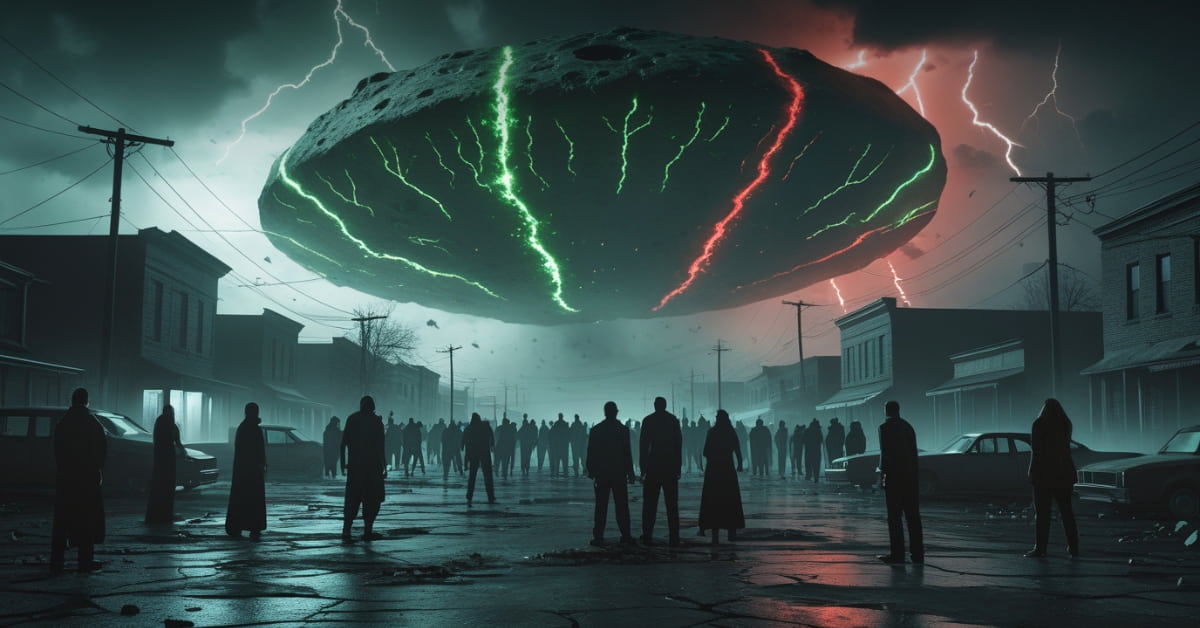The Orca Death Hoax: Unmasking the AI Mirage of “Jessica Radcliffe”

Introduction: The Orca Death Hoax That Shook the Internet
It began with a single clip: a smiling marine trainer leaning over the edge of a tank, the slick sheen of water catching the stage lights. Suddenly, the crowd gasps—an orca breaches, chaos erupts, and the screen cuts to black. Beneath the footage, a chilling caption: “RIP Jessica Radcliffe, age 23.” Panic. Condolences. Rage. Across the globe, hashtags like #OrcaAttack and #JusticeForJessica tore through feeds. But as voices of reason whispered in corners of the internet, a darker question emerged: Is this tragedy real—or a digital specter? Within this post, we’ll trace every ripple of this hoax: its anatomy, the real stories of orca encounters, the science of misinformation, and why we remain so easily ensnared by illusion.
Table of Contents
The “Orca Death Hoax” of Jessica Radcliffe
The viral video claimed to show a fatal incident involving a 23-year-old trainer—“Jessica Radcliffe”—and an orca during a live marine show. Platforms such as TikTok, X, and Facebook quickly lit up with heated discussions, shock, and speculation as the clip spread at lightning speed. But investigations revealed a very different reality:
Yet, deeper investigation uncovered that the entire tale was nothing more than a fabrication.
- No official records—There is no evidence of a trainer named Jessica Radcliffe in any marine park employment rosters or professional registries.
- No credible coverage— Searches across verified news outlets and official statements turned up no obituaries, press releases, or accident reports matching the claim.
- AI-generated fabrication —International news outlets, including The New York Post and The Sun, confirmed that the “footage” was digitally created using AI to mimic real-life events.
This viral hoax underscores how realistic yet entirely false content can mislead millions within hours—especially when shared without fact-checking. It also highlights the growing challenge of detecting AI-generated misinformation before it shapes public opinion.
The Deep Science & Psychology Behind the Orca Death Hoax
Why Human Brains Fail Us in Shock
Emotion beats logic. Neuroscience shows that visuals triggering fear—or perceived death—flood the brain with stress hormones, temporarily shutting down fact-checking circuits. We react first and ask questions later.
AI’s Perfect Illusion
Experts in visual forensics pointed out clear red flags—voices that fell slightly out of sync, facial symmetry that looked too perfect to be natural, and water movements that defied the way real waves behave. These glitches are the fingerprints of deepfake technology. (New York Post)
The Horror of Familiar Tragedy
The hoax echoes real tragedies—infamous incidents like Dawn Brancheau’s death spring to mind. That familiarity makes the fake feel eerily plausible. (The Sun)
H2: Real Orca Incidents—Tragedy, Not Fiction
| Year | Name & Location | Details |
|---|---|---|
| 1991 | Keltie Byrne, Sealand of the Pacific (Canada) | Slipped into pool with Tilikum & others—drowned; coroner cited forcible submersion. (The Environmental Literacy Council, Wikipedia) |
| 1999 | Daniel P. Dukes, SeaWorld Orlando (USA) | Veteran trainer pulled under by Tilikum and drowned. Sparked OSHA regulations and the Blackfish film. (Facts and Details, The Environmental Literacy Council, Wikipedia) |
| 2009 | Alexis Martínez, Loro Parque (Spain) | Dragged underwater and fatally injured by Keto. Autopsy confirmed orca-inflicted injuries. (Wikipedia) |
| 2010 | Dawn Brancheau, SeaWorld Orlando (USA) | Veteran trainer pulled under by Tilikum and drowned. Sparked OSHA regulations and the Blackfish film. (Facts and Details, The Environmental Literacy Council, Wikipedia) |
Captivity vs. The Wild
- In the wild, fatal orca attacks on humans are essentially nonexistent. One rare exception stands out: in 1972, surfer Hans Kretschmer was mauled but astonishingly survived to tell the tale. (inherentlywild.co.uk, Whale Facts)
- In captivity, however, over 30 human injuries and 4 fatalities have occurred since the 1970s. Confinement, isolation, and psychological stress are the root causes. (The Environmental Literacy Council)
The Case of Tilikum—A Whale as Myth, Symbol, and Tragedy
Taken from the wild in 1983, Tilikum spent the rest of his life in captivity, suffering from damaged teeth, a collapsed dorsal fin, and what appeared to be profound psychological distress. Over the years, he was linked to three human fatalities, becoming a tragic symbol at the heart of the global debate over keeping orcas in marine parks. (Wikipedia, WIRED)
Controversy & Debate
Ethics of AI-Driven Media
If realistic AI footage can fabricate tragedy, what standards or verification should platforms enforce? Should deepfakes carry labels? The Jessica Radcliffe case is a wake-up call.
Myth vs. Reality: Orcas in Captivity
Even fabricated, the hoax spotlights an important truth: orcas are not inherently violent—but captivity changes their world. Trainers like Jeff Ventre have argued captivity inflicts physical and psychological harm, citing collapsed fins, broken teeth, and shortened lifespans. (WIRED, MDPI)
California’s Orca Welfare and Safety Act (2016) banned orca breeding and case-marked a legislative shift. (Wikipedia)
Looking Ahead—Implications & Hope
- Media Literacy Is Essential: We must strengthen fact-checking tools, AI detection training, and public awareness to resist a future where misinformation feels indistinguishable from truth.
- Labeling AI Content: A digital “truth certificate” or watermark could preserve trust in media.
- Reimagining Animal Engagement: With immersive tech, virtual reality, and wildlife documentaries replacing live shows, we can respect both human curiosity and animal dignity.
Behind the Curtain: How Journalists and Experts Uncovered the Truth
When the “Orca Death Hoax” video first went viral, the speed of its spread left even seasoned reporters scrambling. But experienced marine journalists, animal behaviorists, and digital forensics teams quickly began connecting the dots.
Veteran investigative reporter Marina Cole, who has covered marine park controversies for over a decade, recalls:
“The name ‘Jessica Radcliffe’ was our first red flag. Within an hour, we confirmed there was no record of her in any professional marine registry or employment log. From there, it became a classic case of reverse-image searching, metadata analysis, and consulting deepfake detection specialists.”
Digital Forensics Findings:
- The “water splash” effect failed fluid dynamics testing, showing pixel distortion inconsistent with real high-speed water motion.
- Background crowd audio was looped—a giveaway of synthetic sound layering.
- Frame-by-frame analysis revealed unnatural lighting transitions on the trainer’s skin, a sign of AI blending errors.
Marine Science Input:
Dr. Leah Porter, an orca behavior researcher with 15 years of fieldwork experience, emphasized that while real tragedies have occurred in captivity, the physical staging in the video defied orca body mechanics.
“The breach height, trainer’s positioning, and the orca’s trajectory didn’t match recorded incidents. It was theater, not nature.”
Why This Matters for Strange Happenings Readers
As our world moves deeper into an age where synthetic media can mimic reality to perfection, the Jessica Radcliffe case is more than an internet oddity—it’s a warning. The fact that a convincing deepfake could stir global outrage in hours underscores why media literacy is now as vital as life literacy.
Conclusion
The Jessica Radcliffe orca attack was never real—but its ripple effects reveal something even more compelling: how emotions, AI, and our fascination with the uncanny intersect. This hoax didn’t just fool us—it taught us a lesson. What happens when our ability to discern truth fails at the speed of a viral post? And if we can be led to believe a fabricated tragedy… what else might we accept as real?
Strange Happenings stands at that intersection—where mystery meets truth. We dig through the shadows to find clarity. If you crave more deep dives into the uncanny—and the truths lurking behind digital illusions—stay curious, stay skeptical, and you’ll find the world’s strangest secrets here first.
CTA: For more spine-tingling investigations and digital-age mysteries, follow Strange Happenings—where what seems impossible often is.
Sources: New York Post, The Sun, WIRED, MDPI, Whale Facts, Wikipedia
Strange Happenings: We dig through the shadows to find clarity. Stay curious, stay skeptical, and discover the world’s strangest secrets here first.




